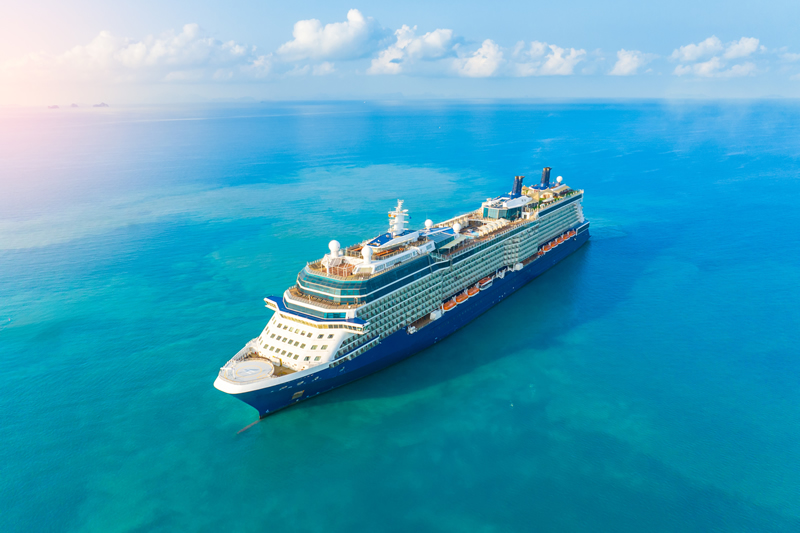As Cruise Ships Increase In Size Carbon Emissions Follow Suit
30
The rapid growth in cruise ship sizes and the rising popularity of cruise holidays come at a steep environmental cost, according to a new report by Transport & Environment (T&E). The world’s largest cruise ships are now twice as big as they were in 2000, and if this trend continues, by 2050, cruise ships could reach 345,000 gross tonnage, nearly eight times the size of the Titanic.

The global cruise industry has experienced a massive expansion over the last 50 years, with the number of ships increasing from just 21 in 1970 to 515 today. This boom, along with the growing size of ships, has resulted in a 20% increase in CO2 emissions from cruise ships in Europe in 2022 compared to pre-pandemic levels in 2019.
Despite carrying 36 million passengers annually, cruise ships are largely exempt from fuel duties and most consumer taxes. If growth continues at the same pace, by 2050, the largest ships could carry up to 10,500 passengers with a gross tonnage of 345,000. "The cruise industry is the fastest-growing tourism sector, and its emissions are spiralling out of control," said Inesa Ulichina, sustainable shipping officer at T&E. "Cruising is a luxury business, and operators must take responsibility for their environmental impact. If they don’t clean up their act, they risk becoming unwelcome visitors."
The world’s largest cruise ship to date, Icon of the Seas, began operation in January 2024. This massive "floating city" features 40 restaurants, 7 swimming pools, and can accommodate 7,600 passengers. It is longer than 15 blue whales and five times larger than the Titanic. In response to environmental concerns, many cruise operators are transitioning to liquefied natural gas (LNG) as an alternative to heavy fuel oil. LNG-powered ships account for 38% of global cruise ship orders today. However, while LNG produces fewer pollutants and CO2, it releases methane, a greenhouse gas over 80 times more potent than CO2, which can make LNG-powered ships even more harmful to the climate than traditional fuels due to methane slip from engines.
Transport & Environment (T&E), one of Europe’s leading advocates for clean transport, envisions a zero-emission transport and energy system that is affordable, circular, and minimally harmful to health and the environment. Over the past 30 years, T&E has played a key role in shaping European environmental laws, including setting ambitious CO2 standards for vehicles, exposing the "dieselgate" scandal, and securing a global ban on dirty shipping fuels. In 2022, their efforts contributed to the EU’s decision to end the sale of new combustion engine cars and vans by 2035. Protea has a full shipping emissions section on our website offering direct in-situ measurement (CEMS) at https://www.protea.ltd.uk/marine.
#protea #emissions #monitoring #cems #ftir #gas #analysers #shipping #marine #carbon #capture
Other Articles
Global Underground CO2 Storage Data Offers Hope Amid Rising Emissions
01
IMO Postpones Adoption Of Global Net-Zero Shipping Framework
04
Pioneering Carbon Capture Projects Ready For Construction
03
Methanol & Ammonia Deemed Ready As Zero-Emission Shipping Fuels
01
Carbon Capture Storage Reaching A Turning Point In Decarbonisation
13
CCS To Capture 15% Of Shipboard Carbon Emissions By 2050
29
Global Shipping Industry Struggles To Navigate Net Zero Transition
21
Carbon Capture Surges as Economics Policy & Industry Demand Align
14
GHG Emissions At Ports On The Rise Despite Initiatives
07
Carbon Capture Utilisation & Storage In A Nutshell
30